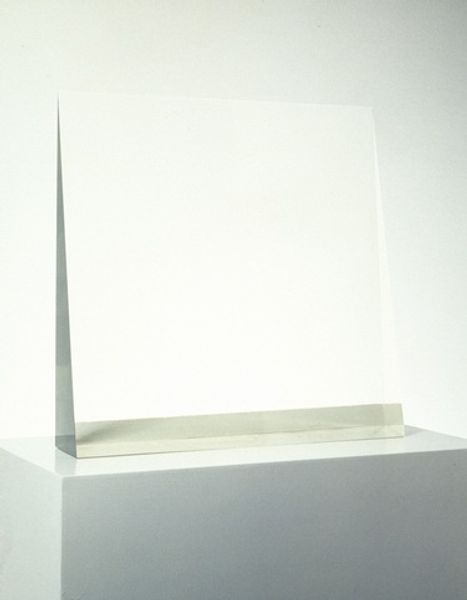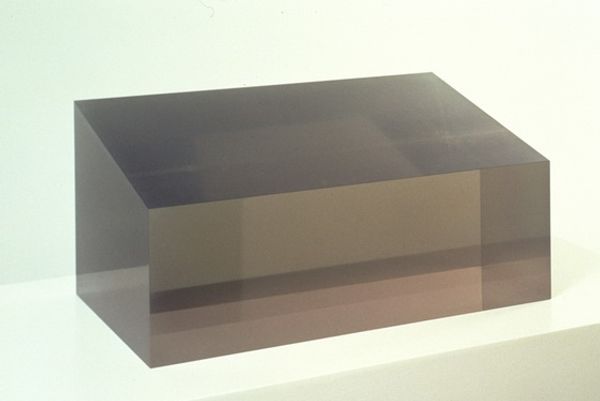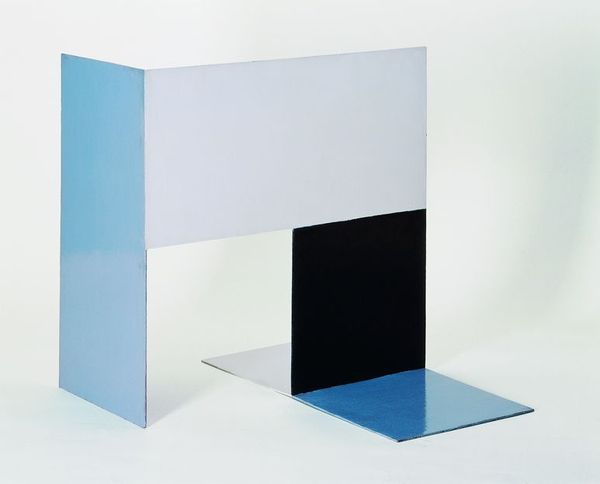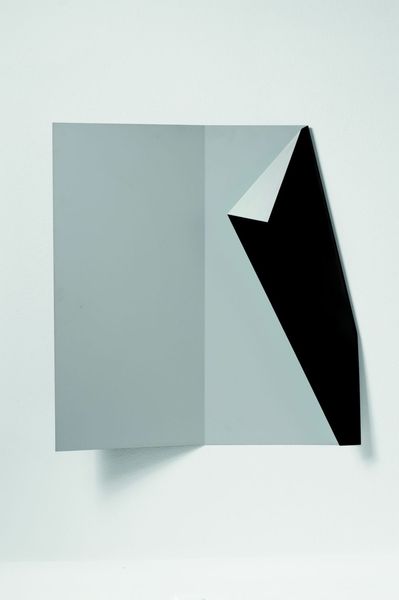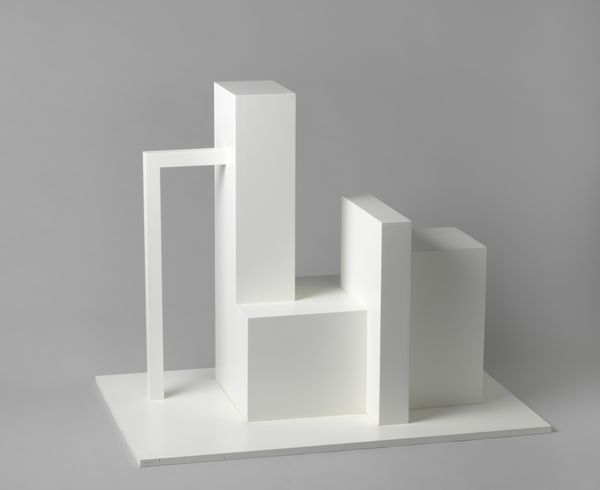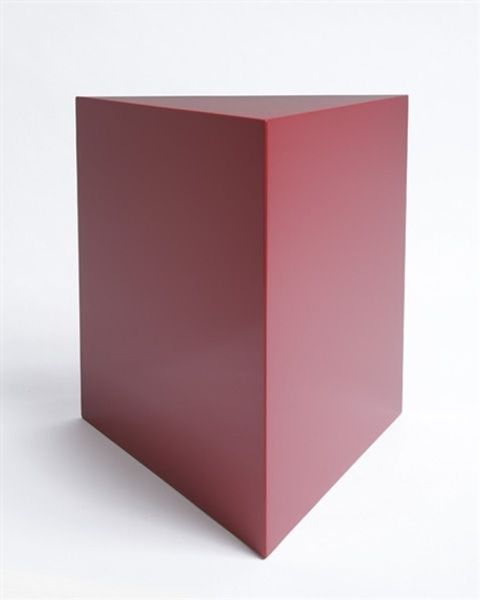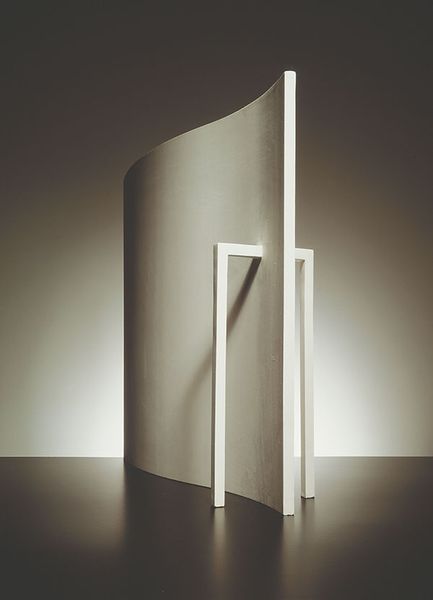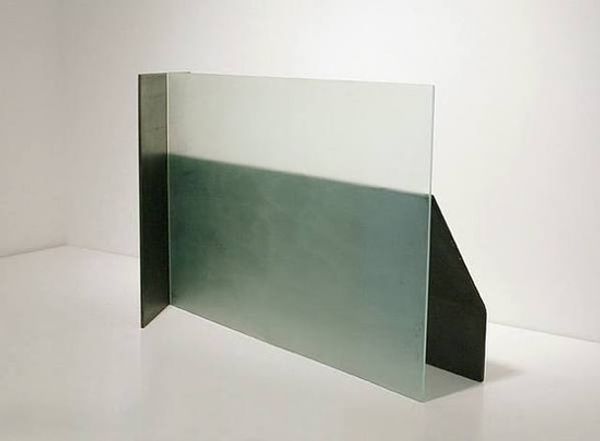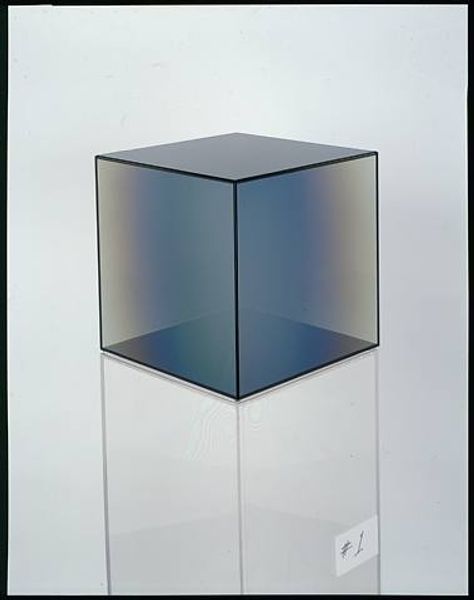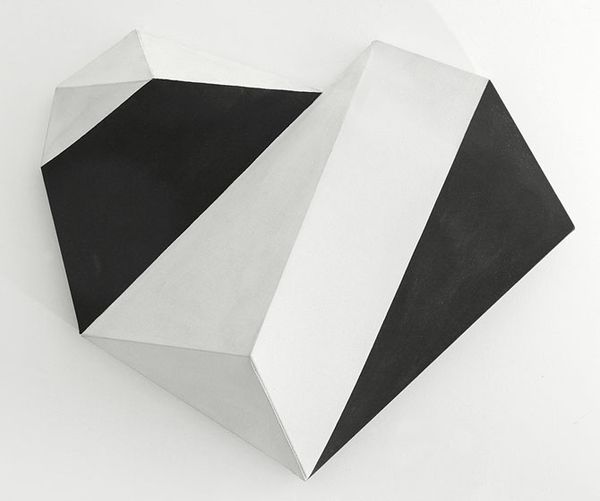
Dimensions: object: 149 x 85 x 73 mm
Copyright: © The estate of Mary Martin | CC-BY-NC-ND 4.0 DEED, Photo: Tate
Editor: Here we have Mary Martin's "Perspex Group." I am intrigued by the use of industrial materials, like Perspex. What does this choice of material and the simple geometric forms signify to you? Curator: Considering Martin's "Perspex Group," it's crucial to acknowledge the material itself. Perspex, a manufactured plastic, speaks volumes about post-war optimism and the rise of consumer culture. Martin's use of it blurs the lines between art and industrial design, challenging traditional hierarchies. How does that shift in material affect your perception of "art"? Editor: I see it as a reflection of the changing world, where mass-produced materials become a medium for artistic expression. It’s quite a modern statement. Curator: Exactly. Martin's work highlights how even the most mundane materials, processed through labor and industry, can be elevated to the realm of art. Editor: This has given me a lot to consider, and I really appreciate your insight.
Comments
Join the conversation
Join millions of artists and users on Artera today and experience the ultimate creative platform.
tate 7 months ago
⋮
Perspex Group 1963 is made up of three rectangular pieces of Perspex. The thickest piece is white and functions as a base, while the longest piece is transparent and is affixed to one edge of the base at a perpendicular angle so that it stands tall. The shortest piece is made of black Perspex and is positioned on top of the white base to the side so that it reaches to almost half the height of the taller transparent piece. Although the work has on occasion been displayed on an additional thin black Perspex base, this was not part of the original sculpture, which is intended to be shown on a plain surface.
